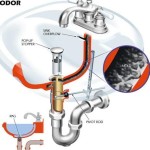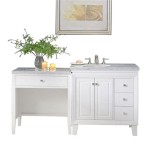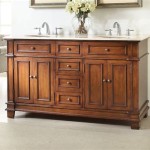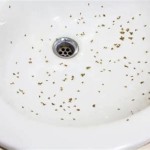How To Clean Bathroom Mold With Baking Soda And Vinegar
Bathroom mold is a common household problem, thriving in the warm, humid environments created by showers, baths, and poor ventilation. While there are numerous commercial mold removal products available, many homeowners prefer using natural solutions like baking soda and vinegar. These readily available ingredients offer a non-toxic alternative that is often just as effective, particularly for tackling surface mold growth. This article will provide a detailed guide on how to effectively clean bathroom mold using baking soda and vinegar, outlining the necessary steps and precautions to ensure a safe and thorough cleaning process.
Understanding the nature of mold is crucial before attempting any cleaning method. Mold is a type of fungus that reproduces through spores. These spores are present everywhere, both indoors and outdoors. When they land on a surface with sufficient moisture and a food source (such as soap scum, dust, or even organic building materials), they can begin to grow. In bathrooms, the combination of high humidity and the presence of organic matter makes them particularly susceptible to mold growth. Common areas where mold is found include grout lines, tile surfaces, shower curtains, around sinks, and behind toilets.
Identifying the type of mold is also important. While some molds are relatively harmless, others can trigger allergic reactions or respiratory problems. Black mold (Stachybotrys chartarum) is a particularly concerning type and can pose significant health risks. If there is extensive mold growth, or if health concerns arise, professional mold remediation services should be considered. For smaller, localized mold problems, a baking soda and vinegar solution can often be a safe and effective solution.
The effectiveness of baking soda and vinegar lies in their respective properties. Baking soda, also known as sodium bicarbonate, is a mild alkali with gentle abrasive qualities. It helps to loosen mold spores and break down the grime that mold feeds on. It also acts as a deodorizer, helping to eliminate the musty smell often associated with mold. Vinegar, containing acetic acid, is a natural disinfectant and can effectively kill different types of mold. The combination of these two ingredients creates a powerful cleaning solution that is both safe and effective for removing bathroom mold.
Preparing for Mold Removal
Before commencing the mold removal process, it's essential to gather the necessary supplies and take appropriate safety precautions. This preparation ensures a smooth and effective cleaning process while minimizing the risk of exposure to mold spores.
First, gather the required materials. This includes baking soda, white vinegar, a spray bottle, a scrub brush (an old toothbrush is ideal for grout lines), a sponge or cloth, water, and protective gear. The protective gear is especially important. Wear gloves to protect the skin from direct contact with mold and cleaning solutions. A dust mask or respirator is recommended to prevent inhalation of mold spores. Eye protection, such as goggles or safety glasses, is also advisable to shield the eyes from splashes. Proper ventilation of the bathroom is paramount. Open windows and turn on the exhaust fan to help circulate the air and minimize exposure to airborne mold spores and the fumes from cleaning agents.
Once the supplies are gathered, prepare the cleaning solution. It is generally effective to start with vinegar before applying baking soda. Fill a spray bottle with undiluted white vinegar. For areas with heavy mold growth, consider slightly warming the vinegar to enhance its cleaning power. However, ensure the vinegar does not reach a temperature that could cause burns. Then, have the baking soda readily available, either in its original container or in a small bowl for easy access.
Before applying any cleaning solution, pre-cleaning the affected area is advisable. Remove any loose debris, such as soap scum or hair, from the surface where the mold is growing. Use a dry cloth or brush to gently sweep away any visible dirt. This ensures that the cleaning solution can directly target the mold spores, maximizing its effectiveness.
Step-by-Step Mold Cleaning Procedure
Once the preparation is complete, the actual mold cleaning process can begin. This process involves applying vinegar, followed by baking soda, and thoroughly scrubbing the affected area. The following steps outline the procedure in detail.
Begin by spraying the affected area generously with white vinegar. Ensure that the mold-infested surfaces are thoroughly saturated with the vinegar. Allow the vinegar to sit on the surface for at least one hour. This dwell time allows the acetic acid in the vinegar to penetrate the mold spores and begin to kill them. For areas with particularly stubborn mold growth, it may be necessary to allow the vinegar to sit for a longer period, such as overnight.
After the vinegar has had sufficient time to dwell, sprinkle baking soda directly onto the vinegar-saturated area. The baking soda and vinegar will react, creating a fizzing action. This fizzing helps to loosen the mold and lift it away from the surface. The combination of the acidic vinegar and the abrasive baking soda provides a powerful cleaning action that effectively removes mold.
Next, using the scrub brush or sponge, thoroughly scrub the affected area. Pay particular attention to grout lines and other crevices where mold tends to accumulate. Apply firm, consistent pressure while scrubbing to ensure that the mold is completely removed. For grout lines, use an old toothbrush or a specialized grout brush to reach into the narrow spaces. Rinse the scrubbed area with clean water to remove any remaining baking soda and loosened mold particles.
Following the rinsing, thoroughly dry the cleaned area with a clean cloth or towel. Moisture is a key factor in mold growth, so ensuring that the area is completely dry is crucial to prevent the mold from returning. If necessary, use a fan to help circulate air and speed up the drying process. Where appropriate, consider using a hair dryer on a low setting to ensure the area is completely dry.
Inspect the cleaned area carefully to ensure that all traces of mold have been removed. If any mold remains, repeat the cleaning process as necessary. For persistent mold growth, consider using a more concentrated vinegar solution or allowing the baking soda paste to sit on the surface for a longer period before scrubbing.
Preventing Future Mold Growth
Once the mold has been successfully removed, it's important to take proactive steps to prevent it from returning. Maintaining a dry and well-ventilated bathroom is the most effective way to prevent mold growth. There are several strategies that can be implemented to accomplish this.
The most important step is to improve ventilation. This helps reduce humidity levels, making the bathroom less hospitable to mold. Always turn on the exhaust fan during and after showers or baths. If the bathroom doesn't have an exhaust fan, consider installing one. If an exhaust fan is not feasible, open a window to allow fresh air to circulate. Ensure that the exhaust fan is properly maintained and cleaned regularly to ensure optimal performance.
Another key strategy is to address any leaks or water damage promptly. Repair leaky faucets, showerheads, or pipes as soon as they are detected. Water damage can create ideal conditions for mold growth, so addressing these issues quickly is crucial. Regularly inspect the bathroom for signs of water damage, such as stains or discoloration, and address any problems immediately. Consider using a dehumidifier in the bathroom to further reduce humidity levels, particularly in areas with poor ventilation.
Regular cleaning is also essential for preventing mold growth. Wipe down shower walls and doors after each use to remove excess water. Use a squeegee to remove water from shower walls and floors. Clean the bathroom regularly with a mold-inhibiting cleaner. Pay particular attention to areas prone to mold growth, such as grout lines and shower curtains. Regularly inspect and clean shower curtains or replace them if they show signs of mold growth. Consider using mold-resistant paint in the bathroom to help prevent mold from adhering to surfaces. This paint contains additives that inhibit mold growth, providing an extra layer of protection.
In conclusion, using baking soda and vinegar is a safe and effective method for cleaning bathroom mold. Proper preparation, a thorough cleaning process, and proactive prevention measures are essential for successfully removing mold and preventing its return. Consistent cleaning and maintenance will help maintain a mold-free bathroom environment.

Prevent Bathroom Mould With Baking Soda Vinegar And More Express Co

Cleaning With Vinegar And Baking Soda

Got Mold How To Clean With Vinegar And Baking Soda

How To Get Rid Of Mould Baking Soda And Vinegar Can Banish Tough Like A Charm Express Co

Got Mold How To Clean With Vinegar And Baking Soda

Diy Mould Remover 8 Ways To Get Rid Of Black Mold Naturally

How To Clean With Baking Soda And Vinegar Katieskottage

5 Ways To Remove Mold From Grout

How To Clean Shower Doors With Vinegar Home Like You Mean It

Black Mold Removal Vinegar Vs Baking Soda Tea Tree Hydrogen Peroxide Result Is Shocking
Related Posts







